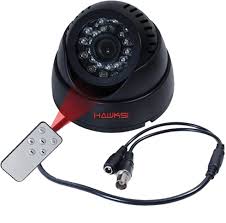Attendance Software: Streamlining Workforce Management
Managing employee attendance is a crucial aspect of workforce management for any organization. Traditionally, attendance tracking involved manual processes such as paper-based timesheets or punch cards, which were not only time-consuming but also prone to errors. In today’s digital age, organizations are increasingly turning to attendance software to streamline and automate the process of tracking employee attendance.
Attendance software offers a range of features and benefits that make it an essential tool for modern businesses. One of the key advantages of attendance software is its ability to accurately record and track employee attendance in real-time. Employees can clock in and out using various methods such as biometric scanners, mobile apps, or web-based portals, eliminating the need for manual data entry.
Furthermore, attendance software provides managers with valuable insights into employee attendance patterns and trends. By generating reports and analytics on factors such as late arrivals, early departures, absenteeism, and overtime hours, managers can identify areas for improvement and take proactive measures to ensure optimal workforce productivity.
Another significant benefit of attendance software is its integration capabilities with other HR systems such as payroll and scheduling software. This seamless integration allows for accurate calculation of wages based on actual hours worked, simplifying payroll processing and ensuring compliance with labor regulations.
Moreover, attendance software enhances transparency and accountability in the workplace by providing employees with access to their own attendance records. This promotes a culture of responsibility and helps build trust between employees and management.
In conclusion, attendance software plays a vital role in streamlining workforce management processes by automating attendance tracking, providing valuable insights into employee behavior, facilitating integration with other HR systems, and promoting transparency in the workplace. As organizations continue to prioritize efficiency and productivity, implementing robust attendance software has become essential for staying competitive in today’s fast-paced business environment.
Six Key Benefits of Implementing Attendance Software: Automation, Insight, and Compliance
- Automates attendance tracking process, saving time and reducing errors.
- Provides real-time visibility into employee attendance data.
- Generates reports and analytics to identify trends and patterns in attendance behavior.
- Facilitates seamless integration with other HR systems such as payroll and scheduling software.
- Promotes transparency and accountability by giving employees access to their own attendance records.
- Helps ensure compliance with labor regulations and streamline payroll processing.
Four Major Drawbacks of Attendance Software: Setup, Technicalities, Cost, and Adaptability Challenges
Automates attendance tracking process, saving time and reducing errors.
Automating the attendance tracking process through attendance software offers a significant advantage by saving time and reducing errors. By eliminating manual data entry and paper-based timesheets, organizations can streamline their workforce management operations and allocate resources more efficiently. This automation not only frees up valuable time for HR personnel but also minimizes the risk of human errors in recording attendance data. As a result, businesses can enhance productivity, improve accuracy in payroll processing, and ensure compliance with labor regulations, ultimately leading to cost savings and increased operational efficiency.
Provides real-time visibility into employee attendance data.
Attendance software offers the valuable pro of providing real-time visibility into employee attendance data. This feature allows managers and HR personnel to access up-to-date information on employee attendance status, including clock-in and clock-out times, breaks taken, and any deviations from the schedule. With this real-time insight, organizations can promptly address attendance issues, monitor workforce productivity levels, and make informed decisions to optimize scheduling and resource allocation. By having immediate access to accurate attendance data, businesses can improve operational efficiency and ensure better compliance with attendance policies.
Generates reports and analytics to identify trends and patterns in attendance behavior.
Attendance software offers a valuable pro by generating reports and analytics to identify trends and patterns in attendance behavior. By analyzing data on factors such as late arrivals, early departures, absenteeism, and overtime hours, organizations can gain valuable insights into employee attendance patterns. This information enables managers to identify recurring issues, implement targeted interventions, and make data-driven decisions to optimize workforce productivity. Additionally, the ability to track attendance trends over time allows organizations to forecast future staffing needs more accurately and proactively address potential challenges before they escalate.
Facilitates seamless integration with other HR systems such as payroll and scheduling software.
Facilitating seamless integration with other HR systems such as payroll and scheduling software is a significant advantage of attendance software. By integrating with these systems, attendance software ensures accurate and efficient processing of payroll based on actual hours worked by employees. This integration streamlines the overall HR processes, eliminates manual data entry errors, and enhances the overall efficiency of workforce management. It also enables organizations to have a comprehensive view of employee attendance data across different HR functions, leading to better decision-making and improved operational effectiveness.
Promotes transparency and accountability by giving employees access to their own attendance records.
Promoting transparency and accountability, attendance software empowers employees by granting them access to their own attendance records. This feature not only fosters a culture of responsibility within the workforce but also builds trust between employees and management. By allowing individuals to review their attendance data, they can ensure the accuracy of their records and address any discrepancies promptly. This level of transparency helps create a fair and equitable work environment where everyone is accountable for their time and attendance, ultimately contributing to improved employee satisfaction and organizational efficiency.
Helps ensure compliance with labor regulations and streamline payroll processing.
Attendance software plays a crucial role in helping organizations ensure compliance with labor regulations and streamline payroll processing. By accurately tracking employee attendance data in real-time, the software helps businesses adhere to labor laws regarding work hours, overtime, and leave policies. This not only reduces the risk of non-compliance penalties but also promotes fair labor practices within the organization. Additionally, the integration of attendance software with payroll systems automates the calculation of wages based on actual hours worked, eliminating manual errors and saving valuable time in processing payroll. Overall, this pro of attendance software not only enhances operational efficiency but also contributes to maintaining a compliant and harmonious work environment.
1. Initial Setup Complexity
Implementing attendance software may pose a challenge in terms of initial setup complexity for certain organizations. The process of configuring the software to align with specific organizational requirements and integrating it with existing systems can be time-consuming and demanding. This complexity may lead to delays in deployment and require additional resources for training and support. Organizations must carefully assess their readiness for the initial setup phase to ensure a smooth transition to the new attendance system without disrupting daily operations.
2. Technical Issues
Technical Issues: Like any software, attendance software may encounter technical issues such as bugs, glitches, or system crashes that could disrupt the tracking of employee attendance. These technical issues can lead to inaccurate recording of employee work hours, causing frustration among employees and potential discrepancies in payroll calculations. Moreover, resolving technical issues with attendance software may require IT intervention and downtime for troubleshooting, impacting overall productivity and efficiency within the organization. As a result, organizations relying on attendance software must have contingency plans in place to address and mitigate potential technical challenges to ensure seamless workforce management.
3. Cost of Implementation
The cost of implementation is a notable drawback of attendance software, particularly for small businesses or startups. The expenses related to purchasing the software, acquiring licenses, and providing training to employees can pose a significant financial burden. For organizations with limited budgets, investing in attendance software may require careful consideration and budget planning to ensure that the benefits outweigh the initial costs. Additionally, ongoing maintenance and support fees can further add to the overall expense of implementing attendance software, making it a challenging decision for businesses operating on tight financial margins.
4. Resistance to Change
Resistance to Change: One significant drawback of implementing attendance software is the resistance that may be encountered from employees who are comfortable with traditional methods of tracking their work hours. The introduction of new technology can disrupt established routines and processes, causing uncertainty and reluctance among staff members to embrace the change. This resistance to change can result in adoption challenges, decreased employee morale, and potential pushback against the implementation of attendance software within the organization. Addressing this con effectively requires clear communication, training, and support to help employees understand the benefits of the new system and ease their transition towards accepting and using the software for attendance tracking.




